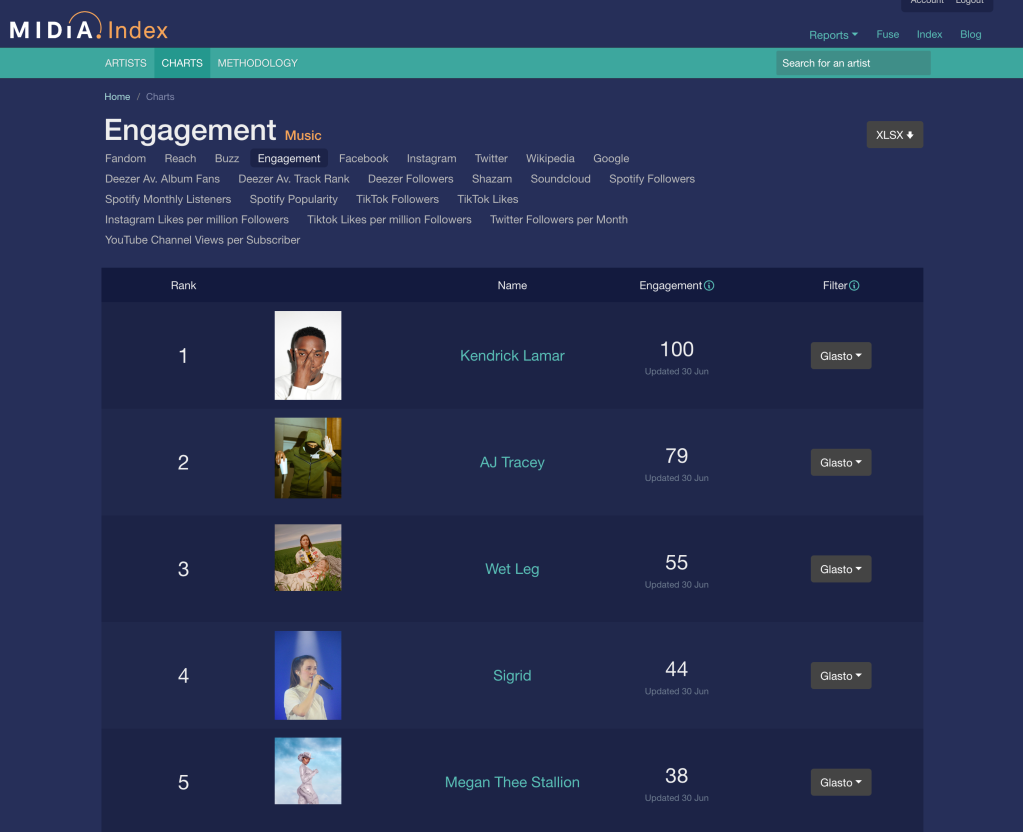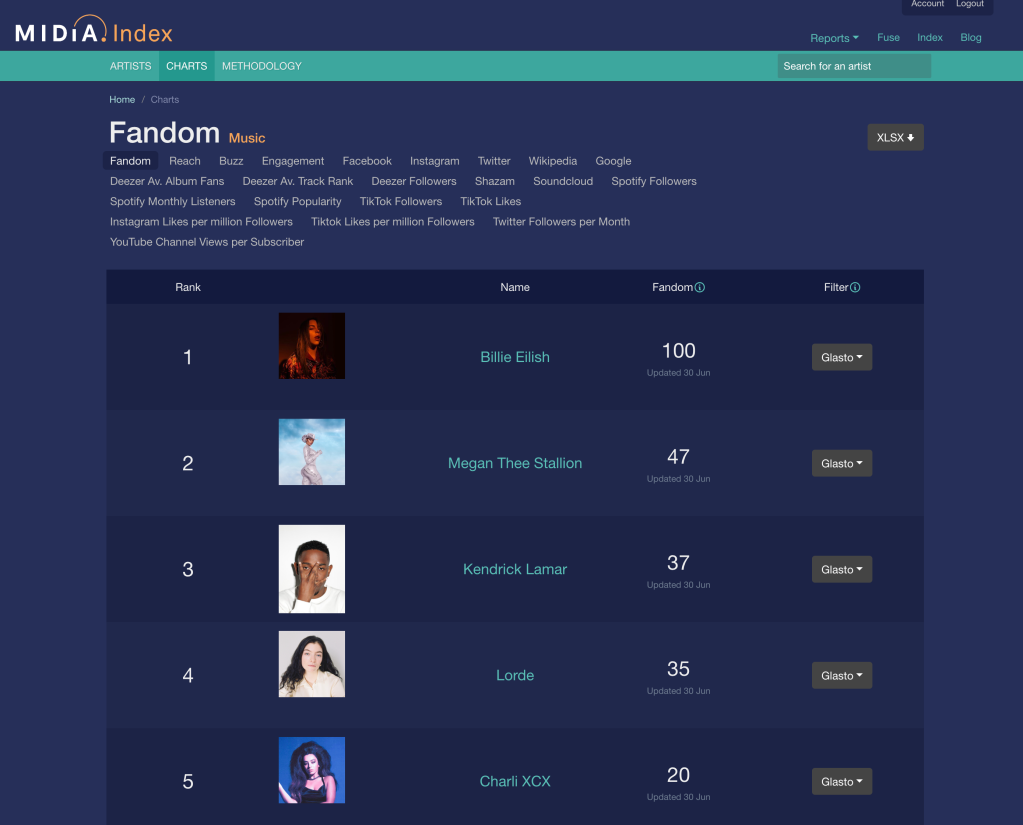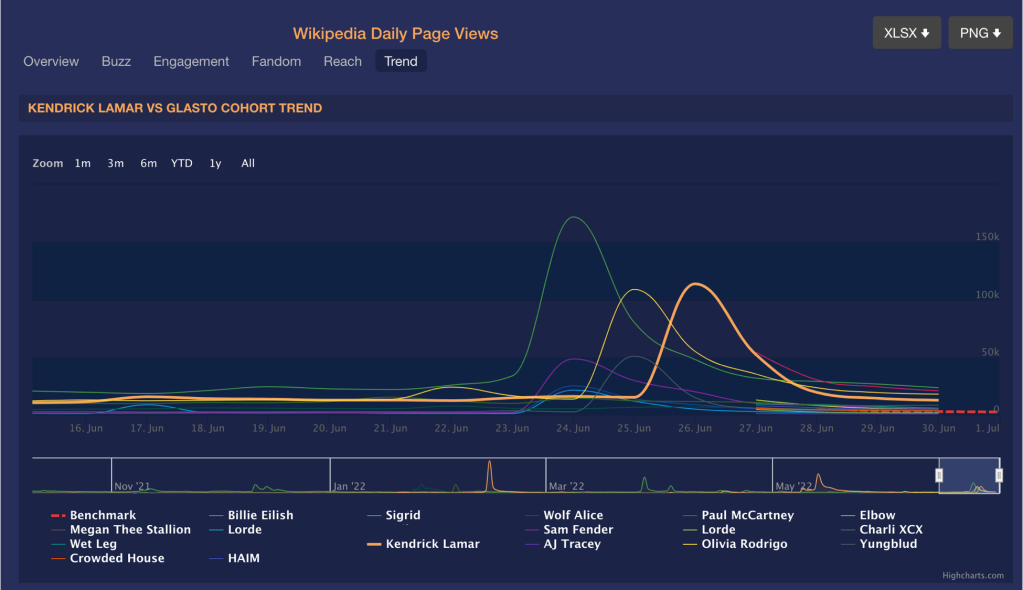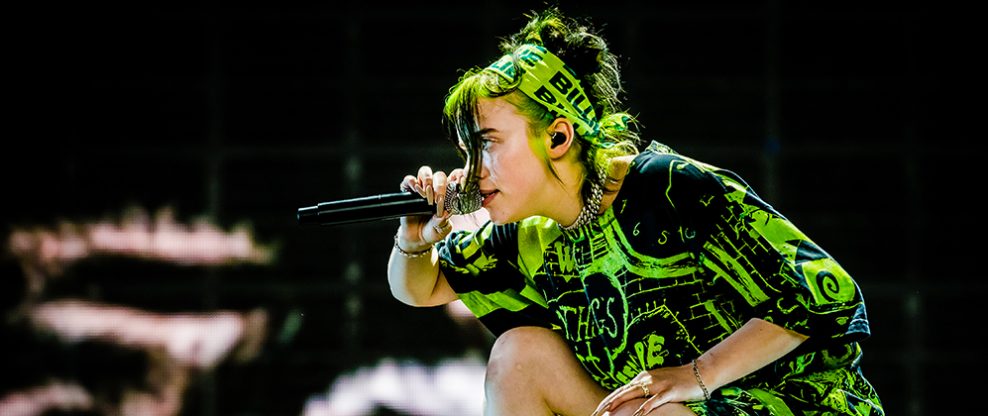(Hypebot) — By Mark Mulligan from MIDiA and the Music Industry Blog
Glastonbury returned to great fanfare after the pandemic-enforced break, which meant it was the first one since 2019. The music world has changed a lot since then, with streaming getting bigger than ever and TikTok now established as a cornerstone of the music business. Back in 2019, the standard thing to do was to look at how much Glastonbury boosted streaming numbers of artists who were on the bill, but in today’s world, it is the impact on an artist’s fanbase that is arguably most important.
The BBC and Glastonbury partnership is a fandom engine room
Glastonbury plays an important role because it is broadcast (TV and radio) and streamed in the UK by the BBC, which means it is a rare thing in today’s on-demand world: it is a cultural moment. Due to the splintering of culture and the fragmentation of fandom, cultural moments in music have largely gone, replaced by the asynchronous paradigm that streaming enables. In the past, summers were soundtracked by hits that everyone knew, now algorithms and personalisation mean that everyone has their own summer hit. Meanwhile, streaming has turned music into a utility, more of a soundtrack to our daily lives than a cultural touchpoint. If streaming has turned music into water, then what we now need are glasses to drink it from. In the UK, Glastonbury provides a counterpoint to that dynamic, presenting a few days in which everyone, from casual viewers through to due hard music fans, can watch great music – music that is, crucially, often outside of what they would usually listen to. The reason this matters is because streaming algorithms deliver us more of what we like and, thus, narrows our cultural scope. The handpicked and diverse line up of Glastonbury, amplified by the expert curation and programming of a national broadcaster, breaks music listeners out of the algorithm cage. There are not many algorithms that would present Wolf Alice alongside Diana Ross. The Glastonbury / BBC combination thus presents a real-world evidence point for how genuine discovery can be brought back into music. It is not instead of streaming, but, instead, amplifying it.
Finding new audiences
So much for the consumer case, but what about the artist case? What an artist (and labels) really want is not just a temporary streaming boost, but a long-term lift to fanbases. Big streaming counts are a great calling card, but, unless they are huge, they do not add up for most artists. And a weekend bump is only of any real value if it provides the footprint for a longer term fanbase lift. So, what really matters is how a one-off event drives fandom growth. But how is that measures? Well, it just so happens that MIDiA is currently building a fandom measurement tool that we are calling Music Index. Let us take a look at some of MIDiA’s Index data to show just how much impact Glastonbury has already had on some of the artists who performed there.

One of the key things we do with Index is create artist cohorts to enable comparisons across similar artists, with the top performing artist in each category indexed as 100 and the others against that base. So, we defined a Glastonbury cohort to track fandom and engagement impact across these artists. Looking at the top five artists in our ‘engagement’ metric (a hybrid measure that includes streaming, YouTube, etc.), the clear winner was Kendrick Lamar, with AJ Tracey being a close second and Wet Leg a not-too-distant third. These three artists all saw the biggest gains during and after Glasto.

The vast majority of established artists do not rely on streaming as their primary income, so measuring engagement is only part of the picture. Which brings us onto our next metric, ‘fandom’, another hybrid metric that captures a large collection of fandom and social behaviours. What is interesting here is that the rankings are very different, with Billie Eilish, who was not even in the ‘engagement’ top five, not only coming out on top, but way ahead of the rest. Unlike with engagement, the distance to second and third spots is much larger. Notwithstanding, Kendrick Lamar grabs another podium spot and also saw a stronger uplift than Megan Thee Stallion, though the latter was already more highly ranked before Glasto and remains ahead.

One of the key inputs into MIDiA’s Music Index is Wikipedia. It is a heavily underrated artist metric that is front of mind for music marketers. Wikipedia is so useful because it reflects a consumer’s desire to go further, to learn more about the artist. It is a fandom lean-in metric. Whereas a Google search may simply be geared to going and finding a track, a Wikipedia view is a first step towards a deeper level of fandom. The Wikipedia spikes for the Glastonbury artist cohort demonstrates a very clear pattern of spikes in line with performances, thus highlighting the huge benefit of a widely broadcast and streamed live performance in penetrating new audiences for artists. Beyond the bigger acts, Sam Fender and Yungblud both saw strong spikes following their performances, further evidence of the unique power of the broadcast and streamed event helping artists connect with new fans.
Taken together, the Glastonbury impact can be defined as follows:
- Kendrick Lamar might have gotten the biggest consumption bump, but Billie Eilish is likely the one who ended up with the largest long-term uplift to her fanbase
- The Glastonbury / BBC partnership makes a compelling case for the power of building artist reach to wider audiences via tentpole, live performances broadcast and online
Artists in the UK understand just how Glastonbury can create career-defining cultural moments – just ask Sam Fender. But the case here should be less about Glastonbury itself and more about how the live / broadcast / stream model presents a global use case for reinvigorating cultural moments in the era of splintered culture.





























